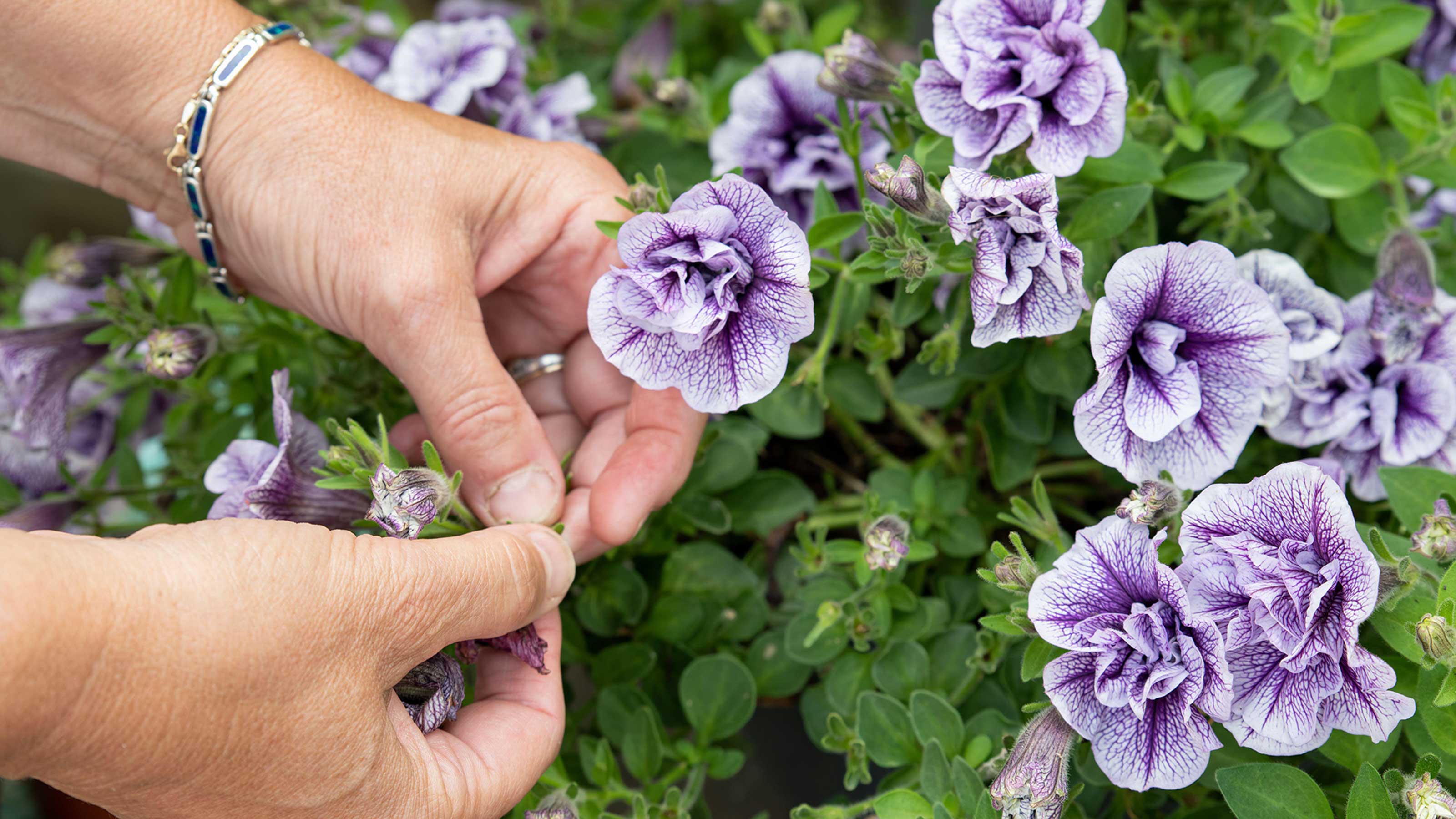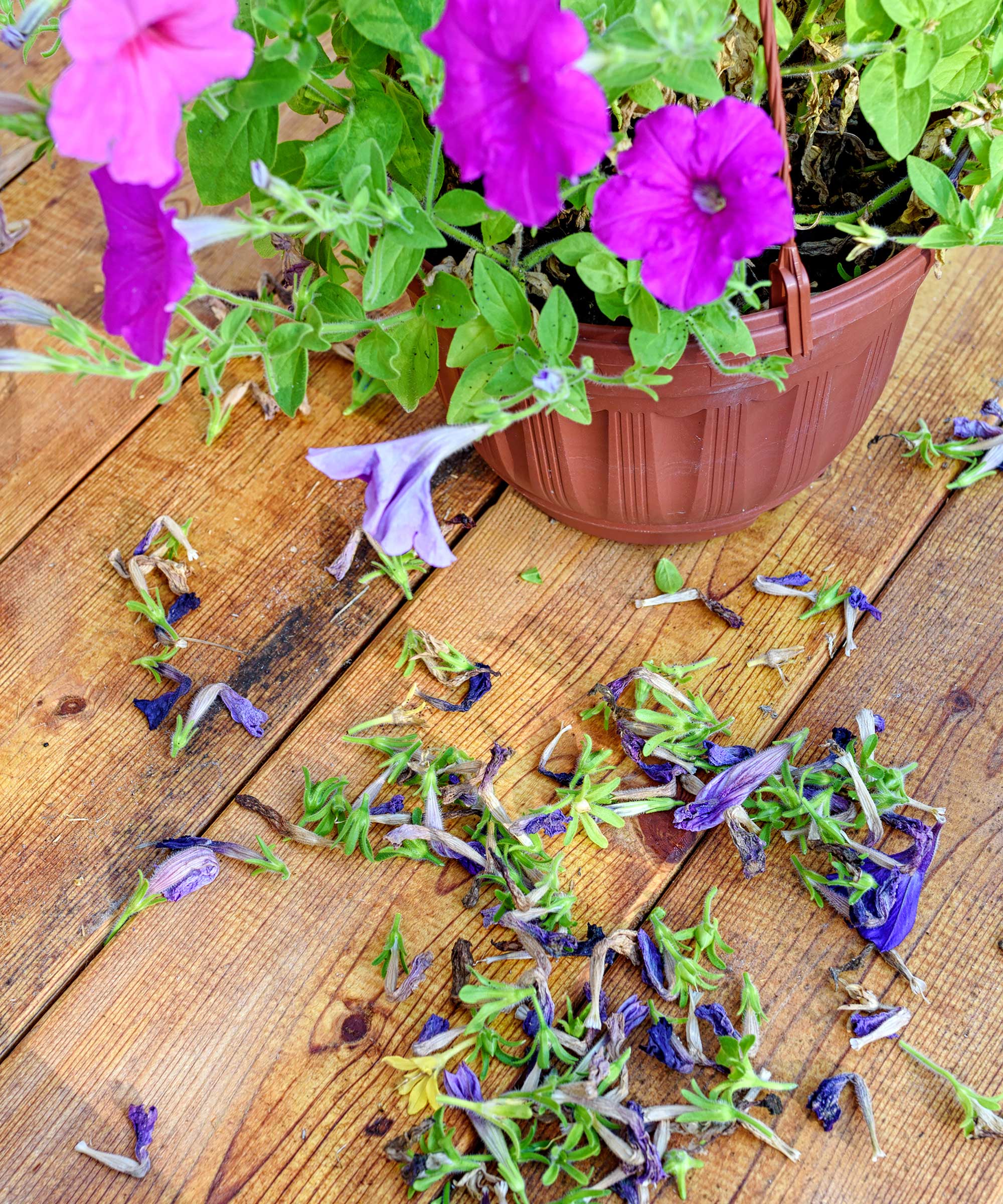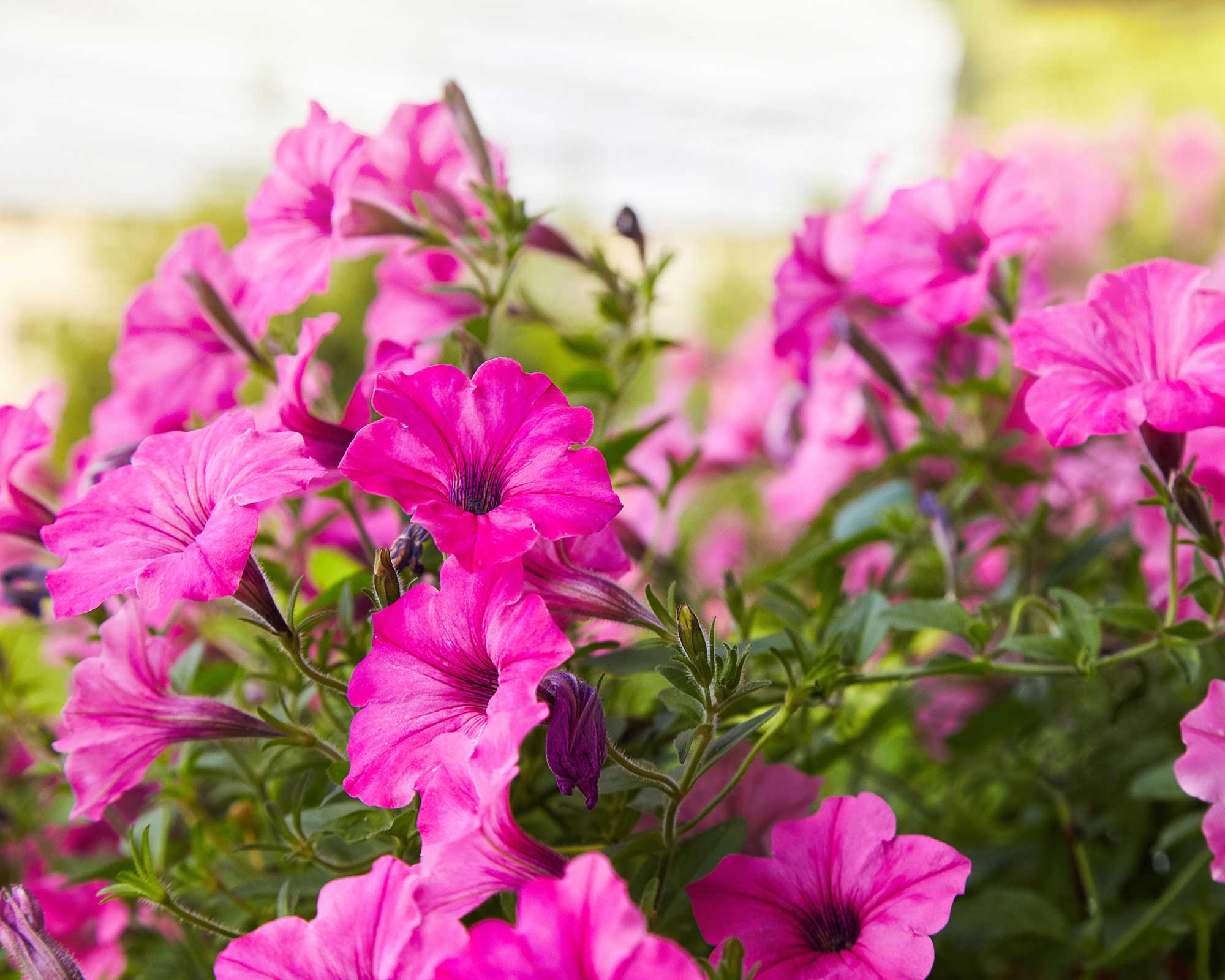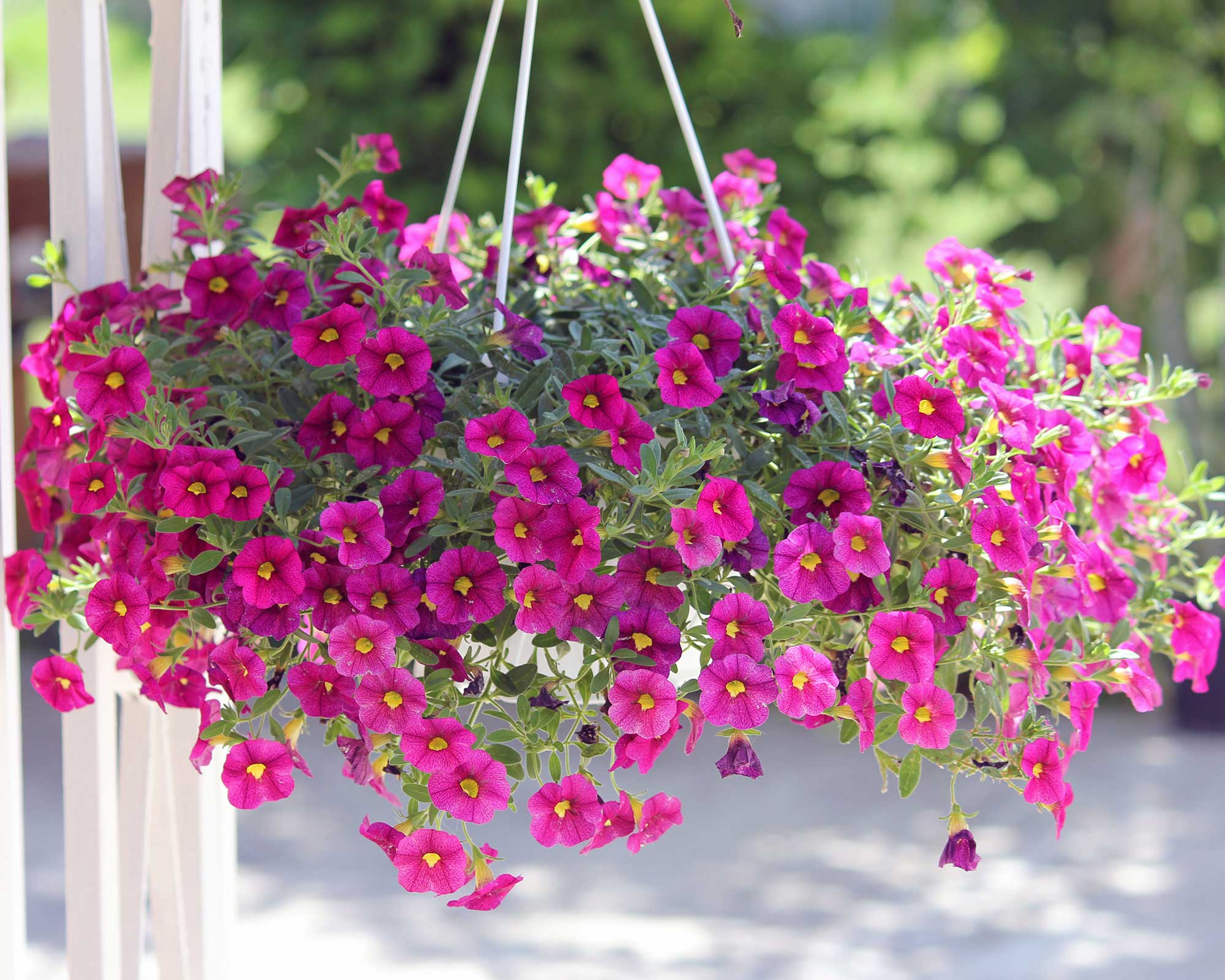How to deadhead petunias: neaten up your summer blooms with these tips
Whether you have hanging baskets or patio pots, learning how to deadhead petunias will keep your display looking its best


Learning how to deadhead petunias is well worth doing to keep your summertime planting scheme looking tip-top. And it couldn't be simpler.
These floral beauties offer a wide spectrum of hues, from jewel-like purples and pinks to elegant snow-whites. Some are delicately fragrant, and many have a spectacular, trailing habit which makes them ideal for hanging baskets. They're a must-have for any backyard, suiting both cottage-garden and contemporary styles alike. Plus, learning how to grow petunias is pretty fuss-free, too.
With all summer bedding plants, 'it is a really good idea to do some deadheading,' says the experts at Squire's Garden Centres. 'Removing the old heads encourages the plant to flower over a much longer period.' Of course, it will also make your container displays look fresher and more vibrant.
Picking off the faded blooms from your petunia plants isn't strictly necessary, but it is definitely worth doing if you have the time. We explain how to do it.
How to deadhead petunias in 3 simple steps
Deadheading petunias is really straightforward and it makes a world of difference to the appearance of the plant. You can use your best secateurs if you like, ensuring they are sharp and clean. However, the task can be completed as effectively using just your hands.
- Locate the wilted blooms – they will look dry, crumpled, and discolored.
- Using your thumbnail and forefinger, gently pinch out the spent flowers, including the seed pod at the base. Alternatively, you can use secateurs.
- If you're composting at home, you can add the collected flowers to your heap.

Pinch out spent flowers, including the seed pods at the base
Should you prune petunias?
You can deadhead petunias throughout their flowering season. But, by midsummer, you may wish to give them a slightly harder prune to neaten up their overall shape.
It's at this point in the year that they can start to become a little leggy, producing blossoms at the tips of long, leafless stems. So, to keep them tidy and encourage more flowers, simply prune the shoots back to about half their length, making each cut just above a node.
After pruning, fertilize and water the plants well to encourage new growth. The plants may look ragged at first, but they'll soon bounce back better than ever.
Need more tips on keeping your summer containers looking their best? Our guide on how to deadhead geraniums will come in useful.

Pruning petunias will keep them looking their best
Do you need to prune million bells the same way as petunias?
Million bells, otherwise known as calibrachoa, are very closely related to petunias and often used in the same way as one of the best plants for hanging baskets. However, they are easier to maintain when it comes to pruning and deadheading.
As Squire's Garden Centres explain, they rarely need cutting back, 'perhaps only in cases where there is seriously limited space and they have spilled significantly over the edge of a hanging basket.' This is unlikely, as they don't tend to trail in a long and spindly fashion.
'They also do not require deadheading – another load off your mind,' the team adds. This is because these plants are 'self-cleaning', which means the flowers drop off naturally when they have died. However, you can pinch back stems to a node to encourage bushier growth and more blooms.

Calibrachoa are very similar to petunias and look lovely in a hanging basket

The garden was always a big part of Holly's life growing up, as was the surrounding New Forest where she lived. Her appreciation for the great outdoors has only grown since then. She's been an allotment keeper, a professional gardener, and a botanical illustrator – plants are her passion.
